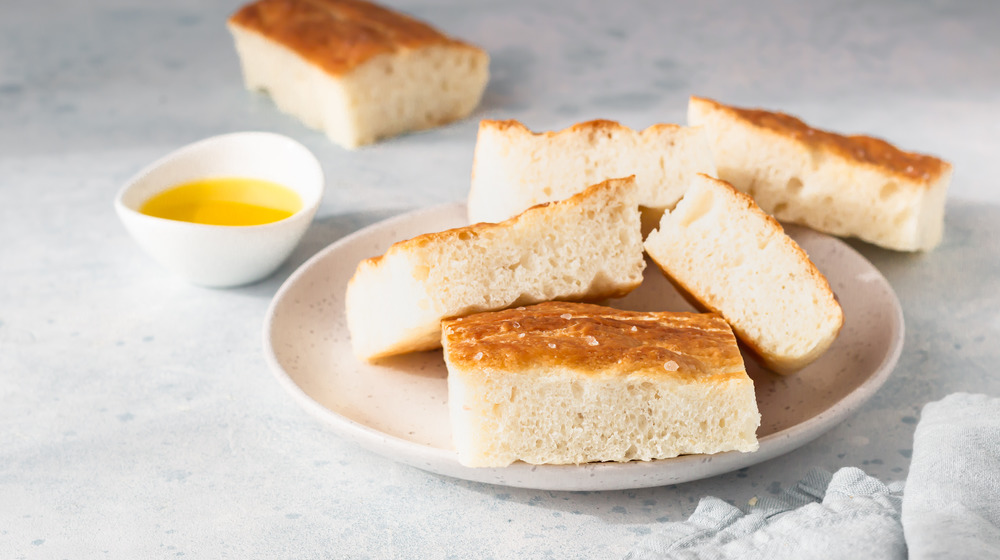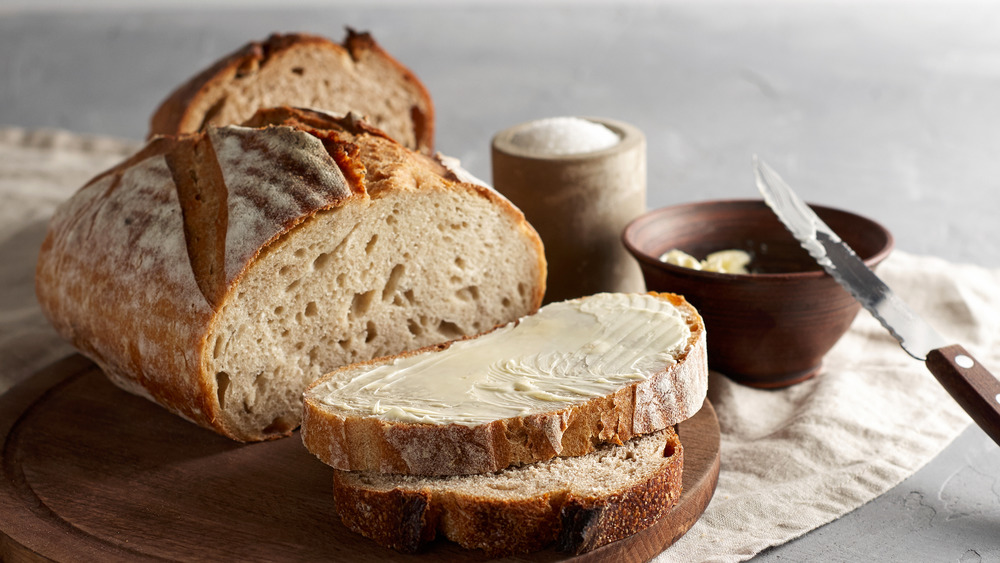How Are Focaccia And Ciabatta Different?
Is there any greater bakery faux pas than mistaking focaccia and ciabatta? Perhaps not, but anyone could be forgiven for mixing the two up — besides their similar appearance, both originated in Italy, and both are made with the same basic ingredients (via Mimi Foods). But beneath the crust, there truly is a world of difference.
The first thing to understand about ciabatta and focaccia is that, although they share the same place of origin, one is quite old and the other quite new. Many scholar's date focaccia's invention back to the pre-Roman Empire times of the Etruscans of Northern Central Italy, with the name deriving from the Latin panis focacius, meaning "hearth bread" (via The Sussex Kitchen). The Guardian states that ciabatta, although it may appear to be a coeval of focaccia, was actually invented in 1982 by an Italian baker by the name of Arnaldo Cavallari. Cavallari sought to create a durable bread that could compete with the French-made baguettes that were popular in Italy at the time.
Three things really set focaccia and ciabatta apart
Focaccia and ciabatta really differ in three main ways, according to Connect2Local: texture, appearance, and the manner of serving and consumption. While focaccia is known for having a thick, chewy consistency, ciabatta is more often compared to pizza dough says Mimi Foods. Meanwhile, in terms of appearance, ciabatta is usually baked in loaves, while focaccia is made as a kind of flatbread.
Finally, on the question of consumption and serving, Connect2Local explains the breads' distinct forms lend themselves best to different dishes. While focaccia can be used in any number of foods, from pizza crust to flatbread to pairing with charcuterie, ciabatta is typically only used for sandwiches. So there you have it — the primary characteristics, in brief, of ciabatta and focaccia, for your use at any distinguished social occasion. Just remember, if you're at the dinner table and want to ask for that unusual flat and squarish looking bread, it is probably... focaccia! But now you knew that.

